
If you’re interested in buying stunning fine jewelry pieces for yourself or a loved one, you need the right information to make informed decisions. Follow along with the experts at Pompeii3 as we provide an in-depth exploration of diamond education and diamond facts.
HISTORY & FORMATION OF DIAMONDS
The word “diamond” comes from the Greek word, adámas, meaning “unbreakable.” This meaning led to the diamond becoming the symbol of unbreakable love and, thus, the most popular option for engagement rings and other romantic jewelry.
A diamond is formed in the Earth’s mantle under high-pressure and high-temperature conditions. In order to find diamond veins, the stones need to be propelled upwards through volcanic eruptions and earthquakes. Only then can miners reach these precious gems and extract them for refinement. These days, diamonds can, in fact, also be formed in a lab environment resulting in eco-friendly lab-grown diamond jewelry!
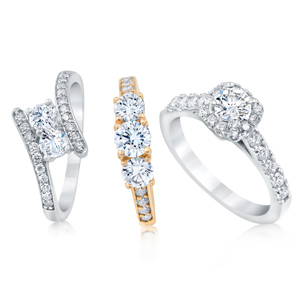

THE VALUE OF DIAMONDS
Besides their mythological history, diamonds are also incredibly popular because of their durability. The Greeks were correct in their assessment because diamonds are considered among the hardest natural materials. Diamonds are the preferred gem in engagement or wedding rings because they’re suited for everyday wear. Unlike many other gems, diamonds rarely chip or break, and they hold a polish remarkably well.
While diamond rarity is falling with the production of lab-grown gemstones, their value due to their durability and sparkle cannot be denied.
THE FOUR Cs OF DIAMONDS
There are four essential elements that determine the quality of the diamond. Our diamond facts are based on the cut, color, clarity, and carat. As you explore this blog to enhance your diamond education, you’ll find an explanation of each factor in any diamond’s value.
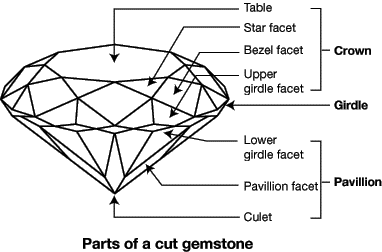
DIAMOND CUT
Among diamond experts, cut is considered to be the most important of the 4 Cs of diamond facts. A well-cut diamond can reflect up to 90% of the light it receives, while a fair or poor-cut diamond will only reflect about 40% of the light around it.
Diamonds come in many shapes, known as cuts. Cutting a diamond gives it more flat planes to ensure it sparkles from every angle. As light hits the various facets, it refracts to show a range of rainbow hues. A better quality cut means more sparkle, brilliance, and shine. Some of the most popular shapes include:
Brilliant (Round)
Determining a diamond’s shape is dependent on the nature of the rough stone. After examining the existing facets and flaws in a diamond, a professional gem cutter will decide how to capture the stone’s essence in a shape suited to showing its best features.
LIGHT HANDLING PROPERTIES OF A DIAMOND

An ideal cut that reflects light back through the top of the stone.

A cut that’s too deep, allowing light to escape through the side.

A cut that’s too shallow and allows the light to escape from the bottom.
Cut so that the light is reflected back through the top of the stone Too Deep; allowing light to escape through side Too Shallow; allowing light to escape from the bottom
Diamonds are fashioned into a number of shapes, depending on the nature of the rough stone. The seven most popular shapes are princess, marquise, pear, emerald, oval, heart and round (also called brilliant). The round, brilliant cut is the most popular shape.
Square, Princess
![]()
![]()
Marquise Cut
![]()

Pear Shaped
![]()

Emerald Cut
![]()

Oval Shaped
![]()

Heart Shaped
![]()

Round, Brilliant Diamond
![]()

Trillion Cut
![]()

Radiant Cut
![]()

DIAMOND COLOR
It’s a fact that a diamond’s color can either detract from or enhance its value. A chemically pure and structurally perfect diamond is transparent with no hue or color to allow for maximum refraction. Color in diamonds can be affected by chemical impurities and/or structural defects in the crystal lattice. When a more yellow tint or color is visible in a diamond, the price is discounted, while the more white the diamond, the higher the price.
Diamonds are graded on the “D” to “Z” scale determined by the Gemological Institute. A diamond with a “D” rating means it has a blue/white hue and is the purest possible color. The “Z” rating is given to diamonds with a yellow tint, the lowest rating available.
Colorless

D E F
Loose Diamonds appear Colorless. Most rare when factoring color.
Near Colorless

G H I J
These Diamonds appear Colorless to all but the trained eye.
Faint Yellow

K L M
When mounted, gems of 1/2 Carat or more show traces of color.
Very Light Yellow

N O P Q R
Increasingly yellow tint is viewable to even the untrained eye.
Light Yellow

S T U V W X Y Z
Yellow tint is obvious. Known as "Champagne" colored.
Diamond Clarity
The clarity of a diamond relates to its internal characteristics, which affect the overall appearance of the diamond. Inclusions, inside flaws in a diamond, and blemishes, defects on the outside of a diamond, are less desirable. Inclusions and blemishes don’t affect a diamond’s performance or structural integrity, but large clouds internally can affect its ability to transmit and scatter light.
Some minor inclusions can be useful, as they can be used to identify each individual diamond, like a fingerprint. Most inclusions are undetectable to the naked eye. However, diamonds without inclusions, known as Flawless Grade, are the most desirable and fetch the highest prices. Check out this chart for a visual representation of these diamond facts.
Stone
Description
Grade

Flawless
No internal inclusions or surface blemishes show under 10-power magnification
FL

Internally Flawless
No internal inclusions, but some minor surface blemishes show under 10-power magnification
IF

Very Very Slightly Included
Tiny inclusions are extremely difficult to see even under 10-power magnification.
VVS1 and VVS2

Very Slightly Included
Minor inclusions may be difficult to see even under 10-power magnification.
VS1 and VS2

Slightly Included
Slight inclusions are seen under 10-power magnification.
SI1 and SI2

Included
Inclusions are visible to the naked eye and range from those just visible (I1) to those seen very easily (I3)
I1, I2 and I3
DIAMOND CARAT
The final C on our diamond education list is the diamond’s carat. A carat is the unit of measurement used to weigh diamonds, which determines the size of the diamond. The diamond's width increases with the number of carats.
One carat is equal to 0.2 grams, or 200 milligrams. The carat weight of a diamond plays a big part in the price. Diamond prices increase significantly at the half- and full-carat weights. Diamonds just below these weights cost significantly less. At Pompeii3, we supply diamonds ranging from 0.25 carats to over 3.00 carats.
The weight of a diamond is not a foolproof way to determine its value, however. If you look at our overview of the basic diamond facts, you’ll see that a combination of all four Cs is necessary for a precise valuation. So a larger carat diamond with more inclusions and blemishes may cost significantly less than a small carat that’s rated as Flawless.
METAL TYPES
At Pompeii3, we deal solely with gold, tungsten, and platinum metals. We work with the finest materials to ensure the best quality for all of our customers. For this portion of your jewelry education, we focus on the different uses, colors, and compositions of gold, tungsten, and platinum.
GOLD
Since long before recorded history, gold has been a valuable and highly sought-after metal for coinage, jewelry, and other arts. Today, it is still one of the most valued and cherished precious metals because its physical properties are unparalleled for use in fine jewelry.
Gold is a shiny and dense metal but also soft enough to ensure malleability for casting and molding. The purest gold has intense luster and a bright yellow color. However, gold also comes in a variety of other hues, including white gold, rose gold, and even black gold.


PLATINUM
Platinum ranks among the rarest of metals and exhibits a remarkable resistance to corrosion. As such, it’s considered a noble metal. In the 18th century, platinum began to appear in the jewelry of western Europe and soon became the metal of royalty. Platinum is used in jewelry at 90-95% purity, a much higher ratio than gold, which doesn't work well for jewelry in its purest form. However, much like gold, platinum is tarnish and rust resistant. Only a few hundred tonnes of platinum are mined and refined annually, making it a scarce and highly valuable material.
SETTING TYPES
After reviewing our precious metals, it’s time to get back to some more diamond facts with settings for our precious stones. The setting is a term that refers to a specific technique to secure a cut gemstone into a piece of jewelry. Below are some of the most popular settings that reliably secure a gemstone in place.
Prong Setting
Prong settings grip a stone with four to six thin arms. They raise the stone up and away from the rest of the mounting to ensure more light enters the gem and refracts off its facets.
Channel Setting
In a channel setting, a literal channel is carved out of the metal, and stones are placed inside of it. To ensure the jewelry refracts light, we drill a hole under each stone to allow more light.
Bar Setting
A bar setting refers to the metal bars that separate gemstones in a multi-stone piece. The bars provide tension, locking the specific gemstone in place.
Pave Setting
A pave setting is when multiple gemstones are positioned extremely close together on a single metal surface to maximize the sparkle and shine of one particular section.
Find More Diamond Facts
When you’re looking to buy a piece of fine jewelry with diamonds, we know you want as much information as possible. If you feel like you need additional diamond education in reference to a specific piece, please don’t hesitate to reach out to our team for guidance and support.
You can connect with us through social media, phone at 847-367-7022, or email at [email protected]. Reach out now to discuss more diamond facts with our expert team!

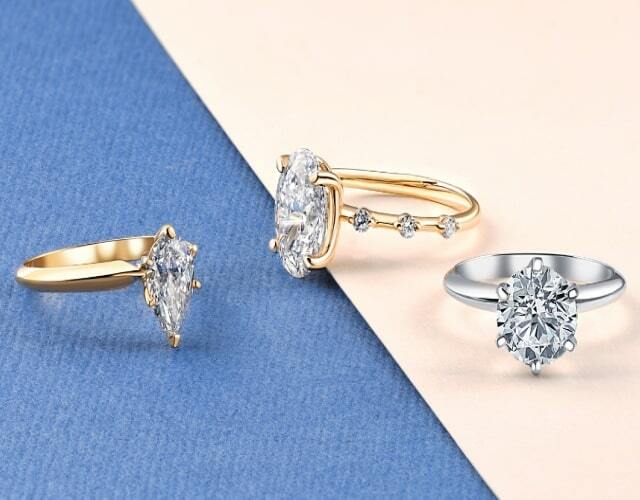 Engagement Rings
Engagement Rings
 Tungsten
Tungsten Wedding Rings
Wedding Rings
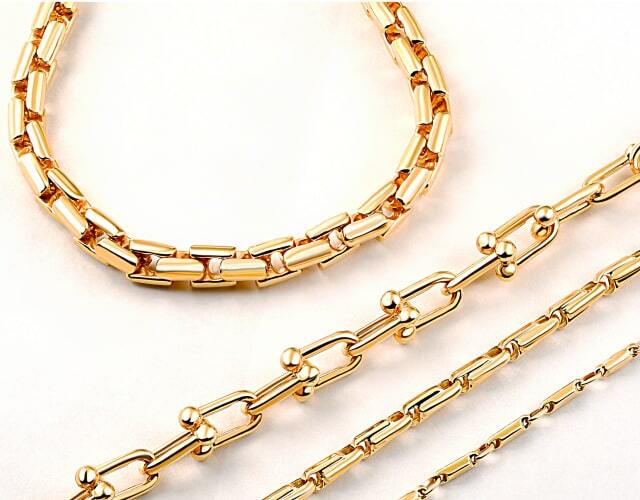 Fine Jewelry
Fine Jewelry
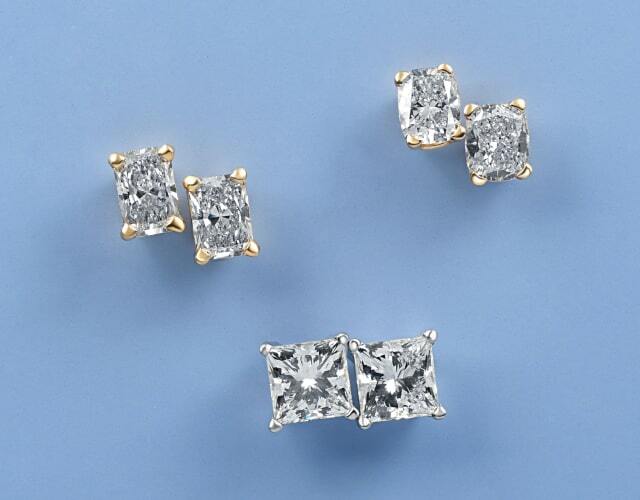 Diamond Studs
Diamond Studs
 Up To 80% Off
Up To 80% Off
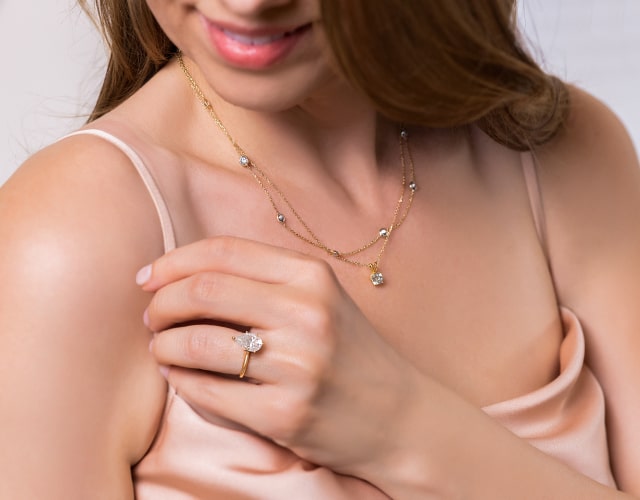 Find The Perfect Gift
Find The Perfect Gift
 White Gold
White Gold








